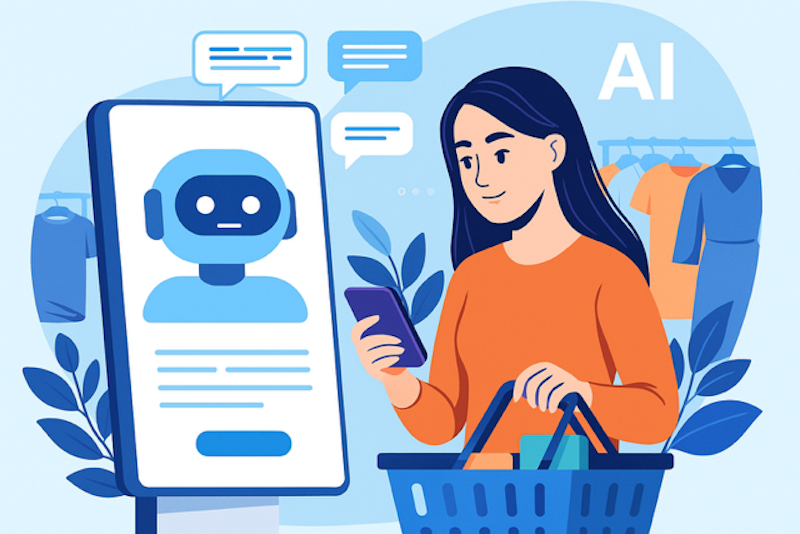The evolution of marketing: how businesses are utilising new technology to boost engagement
"In a landscape saturated with content, how can businesses stand out and capture their audience's attention?"
As consumers are inundated with content from every direction, marketing is no longer about simply sharing information; it’s about creating an immersive, interactive experience that resonates with the target audience.
New technologies are helping businesses engage customers in ways that were once unimaginable. From 360 photo booths to AI chatbots, these innovations are enhancing brand engagement and creating unique touchpoints for interaction.
Let’s explore how businesses are leveraging these technologies to elevate their marketing strategies and captivate their audiences.
360 photo booths: creating immersive visual experiences
One of the most innovative ways businesses are boosting engagement is through 360 photo booths.
Unlike traditional photo booths, which capture a straightforward snapshot, 360 photo booths offer a fully immersive experience by creating a 360-degree video of the subject. This adds a dynamic, creative twist to an event or promotion, allowing customers to share captivating content on social media.
How 360 photo booths function in marketing
360 photo booths capture footage from every angle, usually with rotating cameras or multiple fixed cameras arranged around the subject.
Through advanced 360-degree photo booth software, these setups generate a panoramic video that provides an exciting and interactive experience. Consumers are drawn to the novelty of the 360 effect, and its shareable nature adds an element of organic reach for brands.
Real-world applications and success stories
Many brands are incorporating 360 photo booths into their events and promotions. For instance, luxury brands and tech companies often use these booths at product launches, enabling attendees to create memorable content that links back to the brand.
Advantages for brand engagement
The unique appeal of 360 photo booths lies in their ability to engage audiences visually and emotionally.
As customers create their videos, they interact with the brand more deeply, and by sharing these videos, they amplify brand reach. This visual experience is especially potent for events, where the goal is to create buzz and excitement around a product or service.
Interactive AR (augmented reality) campaigns: Blending the digital and physical worlds
Another transformative technology is augmented reality (AR), which enhances marketing by overlaying digital information on the real world. AR campaigns allow users to interact with products or brand elements in a personalised and engaging way, turning everyday spaces into interactive experiences.
How AR works for marketing
AR technology works by layering digital images or animations onto the real world through a smartphone or tablet. With the help of augmented reality software, brands can create interactive experiences where customers can visualise products, try on accessories virtually, or immerse themselves in a brand’s story.
This form of creative advertising enables consumers to experience products before they buy, bridging the gap between online and in-store experiences.
Benefits of AR for audience interaction
By merging the digital with the physical, AR provides consumers with a novel, engaging experience that enhances brand connection. This immersive technology gives users more control over their experience, making them active participants rather than passive observers. AR campaigns often see higher engagement rates, as consumers appreciate the opportunity to interact with brands on a personal level.
Chatbots powered by artificial intelligence (AI): Enhancing customer interaction
AI powered chatbots have become a staple in digital marketing, enabling businesses to interact with their customers on a 24/7 basis. These chatbots provide quick, personalised responses to queries, helping companies offer a seamless and efficient customer experience.
The mechanics of AI powered chatbots
AI chatbots rely on natural language processing (NLP) and machine learning algorithms to understand and respond to user inputs in a human like manner. These chatbots can handle a wide range of tasks, from answering FAQs to making product recommendations. This capability enables businesses to assist customers in real-time, providing a smooth experience that boosts engagement and satisfaction.
Benefits for customer engagement
By delivering prompt, accurate responses and tailored recommendations, chatbots improve customer experiences and create a stronger connection with the brand. The convenience of AI-driven customer service drives engagement, making customers feel valued and understood.
Personalised marketing with Big Data analytics: Making every interaction count
Data has become one of the most powerful tools in a marketer’s toolkit, especially when it comes to personalisation. Big Data analytics allows businesses to tailor content and recommendations to individual users, based on a wealth of information about their preferences, behaviours, and past interactions with the brand.
How Big Data analytics transforms marketing
Big data enables businesses to analyse vast amounts of consumer information, from browsing habits to purchase history, helping them identify trends and anticipate future behaviours. By analysing this data, businesses can create customised marketing messages that resonate with specific audience segments. This kind of targeted approach has been shown to improve engagement rates and foster loyalty.
Enhanced customer engagement through personalisation
Personalisation helps brands connect with customers on an individual level, which is essential for building lasting relationships. Studies show that 80% of consumers are more likely to purchase from a brand that offers personalised experiences, demonstrating the impact of data-driven marketing.
Voice activated marketing with smart assistants: Hands free brand interaction
Voice-activated marketing is a relatively new but rapidly growing approach, enabled by devices like Amazon’s Alexa and Google Home. Through voice activated technology, businesses can offer hands-free interactions, allowing customers to engage with brands without lifting a finger.
The role of voice assistants in modern marketing
Voice assistants integrate with brands through specific “skills” or commands, allowing users to make purchases, ask questions, and even play branded content. This technology enables businesses to fit seamlessly into consumers’ daily routines, reaching them in new and interactive ways.
Benefits of voice technology for brand engagement
Voice-activated marketing is effective because it’s easy and accessible. Customers can interact with a brand while multitasking, enhancing the likelihood of engagement. As consumers become more comfortable with voice technology, brands that integrate with smart assistants are positioning themselves as accessible, forward-thinking, and user-centric.
Conclusion
The evolution of marketing has brought a wave of advanced technologies, each reshaping how businesses interact with their audiences.
By adopting tools like 360 photo booths, AR, AI chatbots, Big Data analytics, and voice activated marketing, brands are creating experiences that go beyond traditional advertising. Each of these technologies fosters unique, engaging connections that enhance customer loyalty and boost brand visibility.
Businesses looking to grow must embrace these innovative marketing strategies. By prioritising customer engagement through cutting-edge technology, companies can not only capture attention but also build enduring relationships that drive long-term success.































Continue reading…